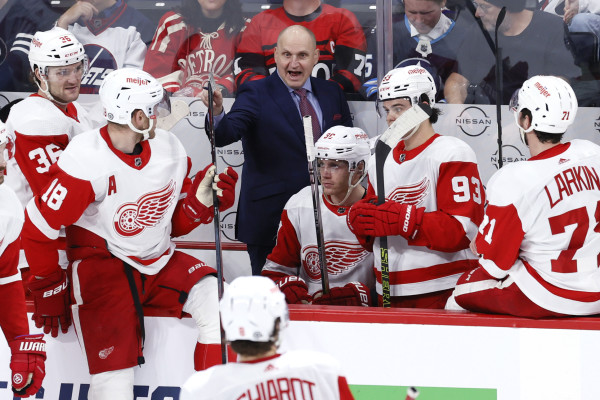
At 4-6-1 through ten games, the Red Wings look like a lesser version of a team that couldn't make the playoffs last year. Is construction or coaching more responsible?
At 4-6-1 through ten games, the Red Wings look like a lesser version of a team that couldn't make the playoffs last year. Is construction or coaching more responsible?
10 games into the season, the Detroit Red Wings are 4-6-1. That's not an awful record, and Detroit has had to wrangle with a number of the league's most formidable teams, including last night against the league-leading Winnipeg Jets. However, whether through the eye test or the numbers, it's hard to escape the conclusion that this year's team is a lesser facsimile of last year's outfit, which wasn't good enough to make the playoffs in the first place.

In 2023-24, the Detroit Red Wings (who, as I needn't remind any hockey fan in Michigan, fell painfully short of the postseason last spring) scored 3.35 goals-per-game while conceding 3.33. Their power play converted at 23.08%, while the penalty kill succeeded 79.58% of the time. Through 10 games this year, all those numbers save the PP are worse, and there, the improvement is marginal. This year's Red Wings score 2.70 goals-per-game but concede 3.40. The power play is up to 23.3%, but that gain is more than out-done by the penalty kill's woeful 65.6% success rate.
In the featured video above, I tried to assess whether the Red Wings' woes trace back more to coaching or to roster construction. To be blunt, there is a solid case on both counts. On the latter subject, amongst the forwards, there seems to be a dissonance between a stated desire for defensive stinginess with a top six desirous of a run-and-gun attack, while the churn on the blue line suggests a deficiency in pro scouting. On the former subject, Detroit looks like a team without a five-on-five identity, and for whatever deficiencies.
In other words, when I look at the present state of the Red Wings, I see blame to be shared between architect Steve Yzerman and coach Derek Lalonde. Check out the clip above for more analysis as to why.
Also from THN Detroit
"We Need to Figure out what We Are as a Team": Red Wings Humbled by 6-2 Home Loss to Winnipeg
Maatta Trade Expresses Red Wings' Faith in Johansson and Holl
Breaking: Red Wings Trade Defenseman to Utah for Third Round Pick
As PWHL Plans Expansion, Detroit a Natural Candidate
Red Wings Need More from Special Teams to Find Winning Formula

